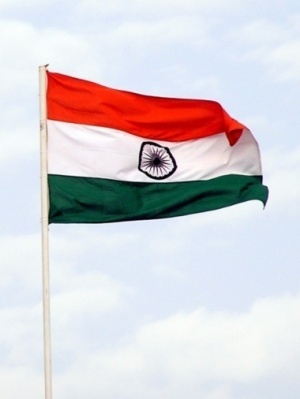by
Brendon Nafziger, DOTmed News Associate Editor | November 29, 2011
Advances in PET-MR imaging to better diagnose brain disorders, and the first-ever use of cutting-edge image-guided cancer treatment technology were among a handful of topics discussed by some of India's leading radiologists in a session highlighting the country's growing radiological clout at the Radiological Society of North America's 2011 annual meeting in Chicago Monday.
"India Presents," organized in conjunction with Indian radiology groups, showcased the scientific meeting of the minds of the world's "two great democracies," in the words of Dr. Bhardwaj, president of the Indian Radiological & Imaging Association.
"Every hospital (is) likely to be equipped with modern imaging modalities" in the future in India, he told attendees.



Ad Statistics
Times Displayed: 174494
Times Visited: 3183 For those who need to move fast and expand clinical capabilities -- and would love new equipment -- the uCT 550 Advance offers a new fully configured 80-slice CT in up to 2 weeks with routine maintenance and parts and Software Upgrades for Life™ included.
Bhardwaj gave a brief sketch of the current install landscape in the country: Currently installed in India are about 2,000 CR systems and 600 MRIs. Excluding refurbished systems, there are about 1,000 CTs installed in India, Bhardwaj said.
Dr. Harsh Mahajan, founder of Mahajan Imaging in New Delhi, said there are 75 installed PET-CTs, with about 7 more on the way. Most PET-CTs are in private hands, about 82 percent, reflecting a trend in India where the majority of health care spending -- 75 to 80 percent -- is in the private sector, he said.
Other signs point to radiology's growth. For instance, Bhardwaj said it has become the most popular post-graduate specialty in the country's medical schools.
And while India's radiology scene is perhaps best known for its teleradiology sector, because of the nation's large, diverse population (with 1.2 billion people, India is the second most populous country in the world), it has also become an increasingly important hub for research, Bhardwaj said.
Research boom
Some of the fruits of that research were on display at the show. Dr. Hemant Patel, a neuroradiologist with Gujarat Imaging Center, discussed using PET-MR fusion imaging to better evaluate neurological disorders. While CT and MRI provide good structural details of the brain, metabolic changes often precede morphological ones -- and these functional changes can't be detected by CT and MRI alone, he said.
Plus, the combination of structural and functional data could help doctors make tricky diagnoses. By meshing together data from PET and MRI, doctors could better distinguish between hard-to-differentiate neurological disorders, such as Alzheimer's disease and other types of dementia, or Parkinson's and hypotonia, he said.
"PET-MRI fusion is getting more popular in the past two years," he said.

